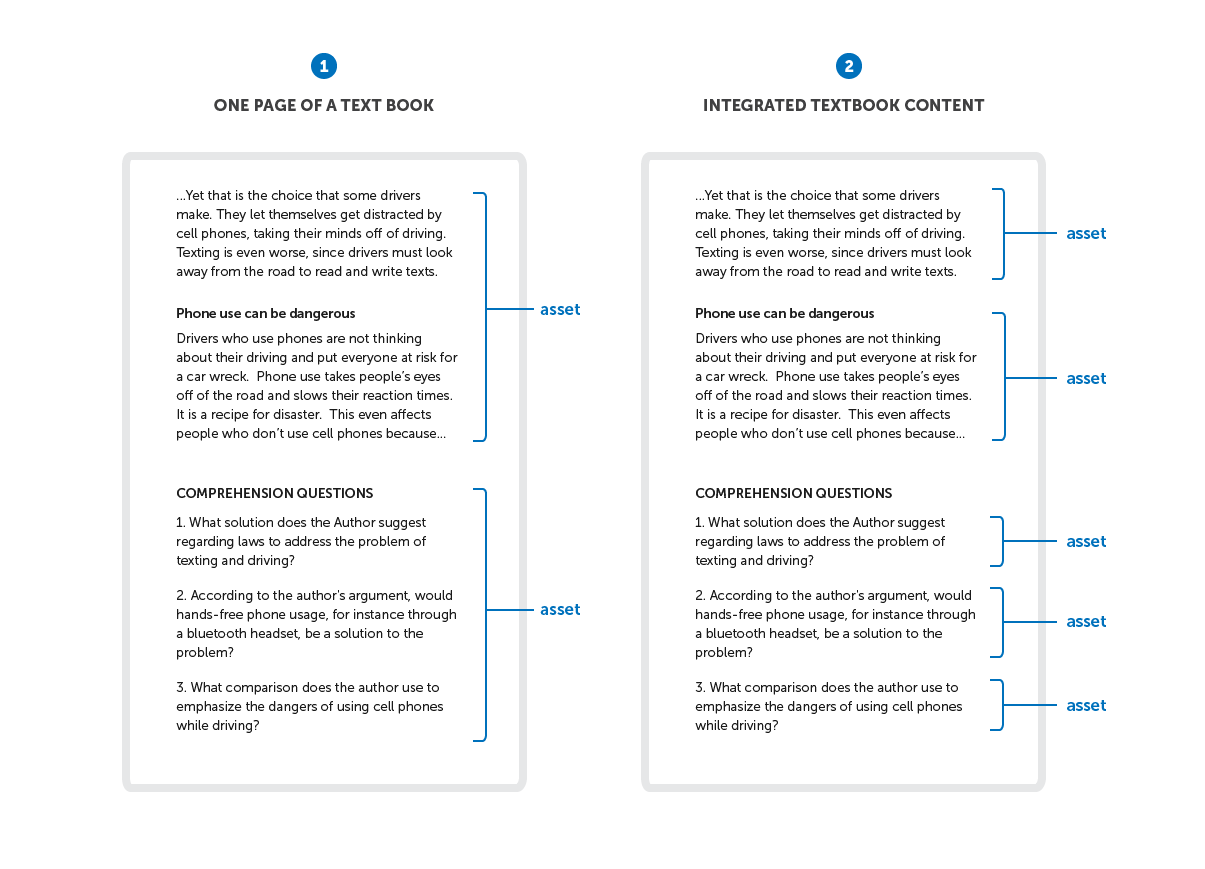What is integrated content?
The editorial process for developing educational content includes careful consideration of that content’s structure. Print textbooks and many digital learning assets have a deliberate design with regards to how the information will be presented to and read by students. However, integrated content goes one step beyond, because it is fundamentally entangled with software – especially software’s ability to track and respond to student activity. In order to access Knewton Learning Analytics and enable Knewton Recommendations, your content management approach must account for this ever-present connection.
The two diagrams below present two ways of managing the same page of an e-book:

The diagram on the left uses print conventions to structure the content. The typography gives some notion of sections, and of separation between instruction and assessment, but the smallest discrete unit here is a page in a textbook.
The diagram on the right separates every piece of content into smaller assets. Where there was a single page with a reading passage and a quiz, integrated content is now stored as distinct sections of the passage and individually tracked assessments.
Unlike paragraphs and questions on the pages of a textbook (or a web site), every piece of integrated content is a distinct entity, a building block that your learning application will recognize and call upon time after time. You will not use one blueprint to shape these building blocks into a single structure for students to enter; instead, your learning application will create a personalized structure in real time for each student to navigate.
Drawing the boundaries between assets requires careful consideration:
Integrated content offers an incredible amount of freedom, but also requires you to think through the ripple effects of even small changes. Every distinct piece of integrated content will be interconnected, and these connections will be used in many different ways.
Consequently, integrated content is treated as one layer in a complex product. The product can break if its layers are not kept in sync.